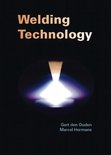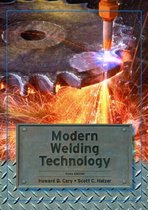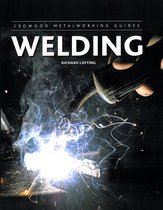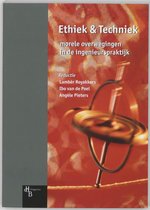Welding Technology
Afbeeldingen
Sla de afbeeldingen overArtikel vergelijken
Auteur:
Gert Den Ouden
M.J.M. Hermans
Co-auteur:
M.J.M. Hermans
- Engels
- Paperback
- 9789065622051
- 21 oktober 2009
- 184 pagina's
Samenvatting
Over the years a large number of techniques has been developed to join materials. Well known joining techniques are soldering, brazing, adhesive joining and welding, each playing an important role in the present manufacturing industry. In particular welding is applied on a wide scale, ranging from small products to large industrial constructions.
In welding the parts to be joined are heated, sometimes in combination with the application of pressure. The necessary heat can be provided by various sources. Use can be made, for instance, of heat produced by electric current passage, by chemical reactions, by radiation and by friction.
Usually, a distinction is made between fusion welding and solid state welding. The essential feature of fusion welding is that local melting of the material(s) takes place during the welding process followed by solidifi cation, whereas in the case of solid state welding no melting takes place and the weld is formed by plastic deformation and solid state reactions.
During welding the material to be welded is subjected to a thermal cycle, consisting of rapid heating, followed by relatively slow cooling. As a result of this thermal cycle different physical and chemical reactions take place in the liquid and solid phase, which are decisive for the properties of the welded joint. This textbook deals with the different aspects of welding and is based on courses given at Delft University of Technology in the period 1980 - 2008.
It is intended primarily for undergraduate and graduate students in materials science and mechanical engineering, but may also provide useful background information to engineers and researchers, who are professionally involved in welding.
The book is divided into three parts.
In Part I (Processes) the most important welding processes applied in industry are addressed. Specifi c attention is given to arc welding (Chapter 1), whereas a number of other processes are reviewed in Chapter 2.
Part II (Metallurgical aspects) deals with the effect of the thermal cycle due to welding on the structure and properties of the welded joint, including the development of residual stresses.
In Part III (Applications) the possibilities and limitations of welding carbon and lowalloy steel (Chapter 4), stainless steel (Chapter 5) and aluminium (Chapter 6) are discussed. Chapter 7 deals with non-destructive testing of welded joints.
URL on this book: http://www.vssd.nl/hlf/m012.htm
In welding the parts to be joined are heated, sometimes in combination with the application of pressure. The necessary heat can be provided by various sources. Use can be made, for instance, of heat produced by electric current passage, by chemical reactions, by radiation and by friction.
Usually, a distinction is made between fusion welding and solid state welding. The essential feature of fusion welding is that local melting of the material(s) takes place during the welding process followed by solidifi cation, whereas in the case of solid state welding no melting takes place and the weld is formed by plastic deformation and solid state reactions.
During welding the material to be welded is subjected to a thermal cycle, consisting of rapid heating, followed by relatively slow cooling. As a result of this thermal cycle different physical and chemical reactions take place in the liquid and solid phase, which are decisive for the properties of the welded joint. This textbook deals with the different aspects of welding and is based on courses given at Delft University of Technology in the period 1980 - 2008.
It is intended primarily for undergraduate and graduate students in materials science and mechanical engineering, but may also provide useful background information to engineers and researchers, who are professionally involved in welding.
The book is divided into three parts.
In Part I (Processes) the most important welding processes applied in industry are addressed. Specifi c attention is given to arc welding (Chapter 1), whereas a number of other processes are reviewed in Chapter 2.
Part II (Metallurgical aspects) deals with the effect of the thermal cycle due to welding on the structure and properties of the welded joint, including the development of residual stresses.
In Part III (Applications) the possibilities and limitations of welding carbon and lowalloy steel (Chapter 4), stainless steel (Chapter 5) and aluminium (Chapter 6) are discussed. Chapter 7 deals with non-destructive testing of welded joints.
URL on this book: http://www.vssd.nl/hlf/m012.htm
Productspecificaties
Wij vonden geen specificaties voor jouw zoekopdracht '{SEARCH}'.
Inhoud
- Taal
- en
- Bindwijze
- Paperback
- Oorspronkelijke releasedatum
- 21 oktober 2009
- Aantal pagina's
- 184
- Illustraties
- Met illustraties
Betrokkenen
- Hoofdauteur
- Gert Den Ouden
- Tweede Auteur
- M.J.M. Hermans
- Co Auteur
- M.J.M. Hermans
- Hoofduitgeverij
- Vssd
Overige kenmerken
- Editie
- 1
- Product breedte
- 170 mm
- Product hoogte
- 13 mm
- Product lengte
- 241 mm
- Studieboek
- Ja
- Verpakking breedte
- 170 mm
- Verpakking hoogte
- 13 mm
- Verpakking lengte
- 241 mm
- Verpakkingsgewicht
- 430 g
EAN
- EAN
- 9789065622051
Je vindt dit artikel in
- Taal
- Engels
- Beschikbaarheid
- Leverbaar
- Boek, ebook of luisterboek?
- Boek
- Studieboek of algemeen
- Studieboeken
Kies gewenste uitvoering
Bindwijze
: Paperback
Editie
: 1
Prijsinformatie en bestellen
De prijs van dit product is 22 euro en 95 cent. Dit is een tweedehands product.Alleen tweedehands
Als nieuw
Op voorraad
Voor 15:00 uur besteld, woensdag in huis
Verkoop door
Dita boek
- Bestellen en betalen via bol
- Prijs inclusief verzendkosten, verstuurd door Dita boek
- 30 dagen bedenktijd en gratis retourneren
- Doordeweeks ook ’s avonds in huis
Vaak samen gekocht
Rapporteer dit artikel
Je wilt melding doen van illegale inhoud over dit artikel:
- Ik wil melding doen als klant
- Ik wil melding doen als autoriteit of trusted flagger
- Ik wil melding doen als partner
- Ik wil melding doen als merkhouder
Geen klant, autoriteit, trusted flagger, merkhouder of partner? Gebruik dan onderstaande link om melding te doen.














